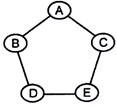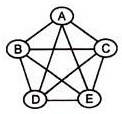This article throws light upon the five types of design of communication networks. The types are: 1. Y Network 2. Wheel Network 3. Chain Network 4. Circle Network 5. All Channel or Star Network.
1. Y Network:
Here A is the central person who communicates with B, C and D. It follows the formal chain of command where upward and downward communication takes place in the organisational hierarchy.
The individual, thus, communicates with both his superior and subordinates.
2. Wheel Network:
ADVERTISEMENTS:
Here again, all messages flow through A, who is at the centre of the wheel. He communicates with other members of the group, while members cannot communicate with each other. This communication network is found in highly formal organisation structures where task-oriented approach to leadership is preferred to employee-oriented approach.
The superior communicates the information to subordination to subordinates while the subordinates do not communicate amongst themselves.
3. Chain Network:
ADVERTISEMENTS:
Similar to Y network, chain network also follows a formal chain of command where information flows vertically upwards or downwards.
A superior and subordinate communicate with each other through vertical chain of command, both upwards and downwards. Information distortion is not likely to take place but communication system becomes time consuming.
4. Circle Network:
This network is similar to chain network except that information flows in a circular direction rather than vertical direction. A can communicate simultaneously with two persons, B and C but to communicate with D, he has to pass the messages through B or C and E.
All five persons cannot directly communicate with each other. In a circle network, the lowest level worker can communicate with the top manager. (A could be the top manager and C could be the lowest level worker). The formal claim of command is, thus, not respected in this network.
5. All Channel or Star Network:
All the members in this network communicate with each other freely and regularly.
It follows the informal channel of communication and provides maximum satisfaction to members. Information flows fast, though there may be problem of coordination. There is one path of communication in single channel network for a specific position and information flows through that path only to various persons. This is usually the official path of communication where information flows ‘through proper channel’ between the superior and subordinates. All information flows through the concerned superior or subordinates only.
It has many positive attributes like:
ADVERTISEMENTS:
a. Only essential information flows through this path,
b. Information is authentic and chances of miscommunication are reduced, and
c. Superiors exercise control over subordinates and hold them accountable for the information transmitted to them.
In large organisations, with too many levels, single channel network may not be feasible as geographical distances and gaps in levels can result in information distortion. Multiple channel networks are more suitable in such situations as one position can be linked to various positions.
ADVERTISEMENTS:
Single channel networks are also called centralised networks and multiple channel networks are also called decentralised networks. The wheel, Y and chain networks are centralised networks as one person passes the information to others. He is called the central person. The other two networks, the circle and the star networks are decentralised networks because there is free flow of information among the members.
Efficiency of centralised and decentralised networks can be tested on the basis of following variables:
(a) Nature of task,
(b) Leader emergence,
ADVERTISEMENTS:
(c) Group satisfaction,
(d) Speed of work.



